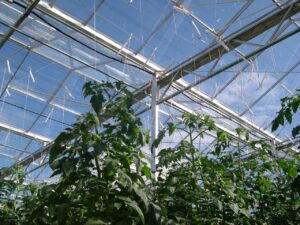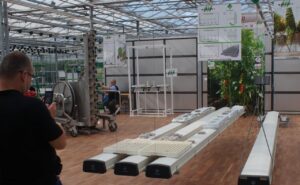No place for auto-pilot
Navigating the greenlife jungle
By John Fitzsimmons
Over recent months, pressures have been building on nearly all sectors of the economy. Previously undetected stress cracks are appearing daily, with outcomes ranging from annoying to catastrophic. And yet, as the old saying “it’s an ill wind that blows no-one any good” goes, there are still thrivers among the survivors. The greenlife industry is our small part of the whole system but even it has ended up in a heavy debate between some retailers and some producers. It’s very emotive.
So, where do you sit in this turmoil? Or do you see yourself as riding out ‘normally choppy’ seas? Some events and reports have depicted ‘David and Goliath’ scenarios. Is this really the case or are the reports reflecting matters peculiar to individual enterprises? This writer is in no position to share or comment on individual situations, although personal experience allows us all to arrive at our own observations. Therefore, any observations here are derivative and general in nature.
I have previously shared the view that “if you’re not in business for fun or profit (then) what are you doing there?” Note that having ‘fun,’ presumably without profit, was an option. That saying was attributed to the man who really got Avis car hire going in the USA in the 1960s. Does that apply to your greenlife enterprise in Australia today? If there’s no profit and no fun – what do you do? The contemporary word is to ‘pivot.’ Or as Kenny Rogers sang “know when to hold ’em, know when to fold ’em, and know when to run.”


Over a long time I have worked for enterprises some of which have continued to grow, even boom, and others which have (deservedly) disappeared almost without trace. Looking back now, and even at the time, the main reason for diminution or extinction was a failure to observe the tidal changes and adapt accordingly. Occasionally, there were legitimate reasons why decisions that could have been taken were not taken OR failed in implementation. But failure to observe changes and react in a timely and appropriate manner is its own category. Example: the arrival of the internet and its effect on printed classified advertising.
There is (at least) one Australian manufacturing (!) company that continues to grow and thrive (!!) into its 4th generation (!!!). It survived early challenges by adopting new manufacturing techniques. Then it introduced superior materials followed by new designs. Then, as the rest of the world caught up, it could have struggled as yet another ‘me too’ manufacturer of a globally common tool. But it flipped again to produce highly innovative and specialist versions of its products for high value niche markets in new fields. Adapting to change, staying ahead of the wave, innovation and forethought have long been hallmarks of that (still privately owned) company. It is now virtually in a global field of its own discovery and making.
Even before that company’s most recent adaptions, it was pretty successful at focusing on quality – category-leading quality. This meant that demand and preference for its products, was always high, especially from qualified and professional trade users, and later from the broader consumer market. Yet even those high standards were actively pursued by competitors, so another move to out-compete them was needed. Simply competing on price was impossible, and on quality alone more and more challenging. In greenlife, quality – healthy, well grown, and with good attributes and in-soil performance, will always appeal and usually sell first.

Among many business rules, grandma always said not to put all your eggs in one basket. It’s a truism that has lasted centuries and can still be applied to the most recent techy startups. Spreading the risk to mitigate the overall risk is a solid plank of business. It can apply to relying on too few suppliers, as much as to relying on too few customers, or even too few talented people or other resources. Diversification in categories and market sectors always helps to spread the risk.
The leader of one of the horticulture world’s most respected companies, coincidentally one that has itself cleverly spread its capabilities and risk to another industry sector, visited Australia a while back. She (a very capable and respected lady) related then how major retailers in her region often attracted new suppliers (including many of her company’s customers) with the prospects of ‘growing together.’ Major investments were made in capacity and productivity which raised the importance of the growing supplier/s in the retailers’ networks. However, that risked making them vulnerable (see grandma’s advice above) and, when the occasional inevitable failure eventuated, there was always another up-and-comer in the comet’s tail ready to invest and ‘grow together.’ Rinse and repeat.
Of course, mutually rewarding long-term relationships are preferred and valued, especially in certain cultures. This often involves mutual investments in shared objectives. A lesson learned early however, is to make sure that mutually acceptable terms are agreed and understood at the beginning.
Even well-founded business relationships can come unstuck when trust is lost, or when a significant power imbalance emerges or is imposed.

Economies of scale certainly have their place to improve production efficiencies and constrain unit costs. But this is not necessarily a straight-line progression. Example: a significant fruit grower was doing very well, cautiously evaluating new varieties while maintaining margins and production of ‘X’ tonnes off ‘Y’ hectares. Many people wondered why he didn’t get bigger – ‘take things to the next level.’ But the grower knew his land, his trees, and his financial and personal resource limitations. To add ‘Z’ hectares of orchard or trees he knew he would have had to invest significantly more in equipment, labour, pack shed capacity and other inputs; his management challenges would have risen significantly. His Return on Investment would have actually fallen, and going to an even higher level did not align with his personal and family goals. Similarly, another fruit grower sold off much of his equipment, sub-contracted specialist seasonal labour and outsourced packing and marketing. Using appropriate varieties and the best growing techniques, a husband, wife and a son made a good family income off a relatively small and manageable (at that scale) area.

The above paragraph references productivity at different levels and investments in capital equipment. Relate this to the changes in our supermarkets of late. In Australia labour is relatively expensive so capital investment in labour-saving automated checkouts has boomed. Overseas, based on reports from the USA and UK where labour is relatively cheaper, the same trend is being questioned because losses due to payment evasion (especially in challenging economic times) are disproportionate to labour savings. In each environment different productivity tools will be valued differently.

Again, in the supermarket setting, consider the ‘Aldi model’ of operation. With a smaller range of items stocked, the long checkout belt and customers wrangling their own shopping (pre-auto checkout), staff are used in a more efficient and versatile manner so staff costs per store are lower.
Summarising these observations, and relating them to the Australian greenlife sector at a time of seemingly challenging upheaval, the above suggests:
- Do what you do – do it very well
- Play to your strengths
- Always work on improving productivity
- Always keep an eye on the tidal and weather changes around you
- Adapt in a timely and appropriate manner
- Spread risks
It is also constructive to regularly communicate, and exchange, experiences and ideas with industry peers. If it comes to ‘you’ versus ‘them’ then you can be better prepared.

